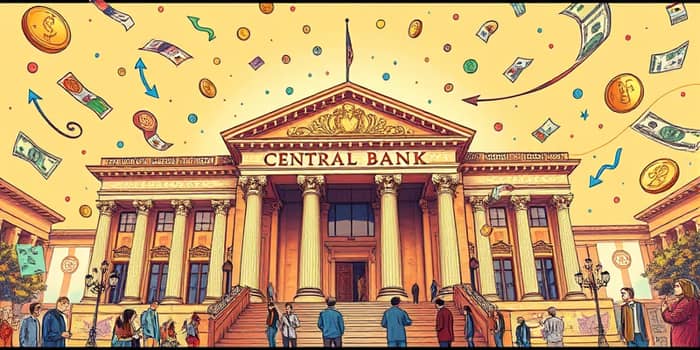
The decisions made by central banks shape the very fabric of national economies, influencing everything from consumer borrowing costs to global financial markets. By adjusting key policy levers, monetary authorities aim to foster growth, curb inflation, and ultimately ensure a stable economic environment for households and businesses alike.
Understanding how institutions like the U.S. Federal Reserve, the European Central Bank, and the Bank of England exercise their mandates is crucial for anyone seeking insight into the forces that drive employment rates, price levels, and overall financial health. This article delves deep into the tools, structures, and impacts of monetary policy.
At its core, monetary policy refers to the system of techniques used by a central bank to regulate the money supply and interest rates. The principal goals include maximum employment and price stability, which, in many advanced economies, constitute a dual mandate. Central banks also target moderate long-term interest rates and the stability of the financial system itself.
In the United States, the Federal Reserve’s dual mandate directs it to balance low inflation with robust job creation. Other institutions, such as the European Central Bank or the Bank of Japan, focus on maintaining consumer price indices within defined thresholds. Across different jurisdictions, these aims reflect a shared commitment to preventing both spiraling inflation and debilitating deflation.
Central banks deploy a diverse toolbox of traditional and unconventional tools to steer economic conditions. Each instrument influences the availability and cost of money, guiding spending and investment decisions by households, businesses, and financial institutions.
Technically, the effects of reserve adjustments can be modeled by the money multiplier: M = 1 / R, where R represents the reserve requirement ratio. A lower R raises M, thereby enlarging the monetary base and facilitating broader economic activity.
Policy choices are rarely made unilaterally. In the U.S., the Federal Open Market Committee (FOMC) gathers members of the Board of Governors and regional bank presidents to deliberate on economic indicators, market trends, and global events. Similar committees exist in other central banks worldwide.
Broadly speaking, monetary policy falls into two categories: expansionary measures designed to stimulate economic activity and contractionary actions aimed at cooling an overheating economy. The choice depends on prevailing conditions and targeted outcomes.
On the micro-level, more accessible credit can empower consumers to finance homes and education, while businesses may expand operations, creating new employment opportunities and fostering innovation. Such shifts reshape household budgets and corporate strategies.
At a macro scale, changes in monetary conditions ripple into GDP growth rates, unemployment statistics, and consumer price indices. Central banks aim for a harmonious alignment between growth and stability, avoiding the extremes of persistent inflation or prolonged downturns.
During times of acute stress, central banks act as lenders of last resort, providing emergency liquidity to solvent institutions facing short-term funding shortages. This function underpins confidence in the banking system and thwarts potential contagion.
By wielding the exclusive authority to issue currency and adjust balance sheets, these institutions can prevent system-wide financial collapse, stepping in to safeguard depositors and maintain orderly market functioning.
Independence from political cycles is widely viewed as essential for credible monetary policy. When central banks are free to make decisions based on economic criteria rather than electoral considerations, they can focus on long-term goals and shield policy from short-term gains that might harm overall stability.
However, achieving this autonomy requires clear legal frameworks, transparent communication, and accountability mechanisms to balance authority with responsibility.
Since the global financial crisis, unconventional measures like quantitative easing and extended forward guidance have emerged as vital tools when policy rates approach zero. Large-scale asset purchases became standard in several advanced economies.
Debates now center on the duration of these programs, potential risks such as asset price inflation, and the mechanics of unwinding balance sheets without disrupting markets. Central banks continue to explore hybrid approaches that integrate traditional and novel strategies.
While most central banks share common goals, legal mandates, and policy instruments, variations arise from regional economic structures, legal systems, and institutional histories. Emerging markets often employ higher policy rates to combat inflation volatility, whereas developed economies may focus on forward guidance and balance sheet adjustments.
Differences in transparency and communication style also affect market responses. Some institutions publish minutes and detailed economic projections, while others rely on concise policy statements and speeches by key officials.
The art and science of monetary policy rest on a delicate balance: stimulating growth without igniting inflation, and ensuring financial stability while fostering innovation. Central banks must adapt their tools to evolving challenges, guided by rigorous data analysis and clear communication.
By understanding these mechanisms and the reasoning behind each decision, stakeholders—from policymakers to the general public—can better appreciate the crucial role of monetary authorities in shaping prosperous and resilient economies.
References













